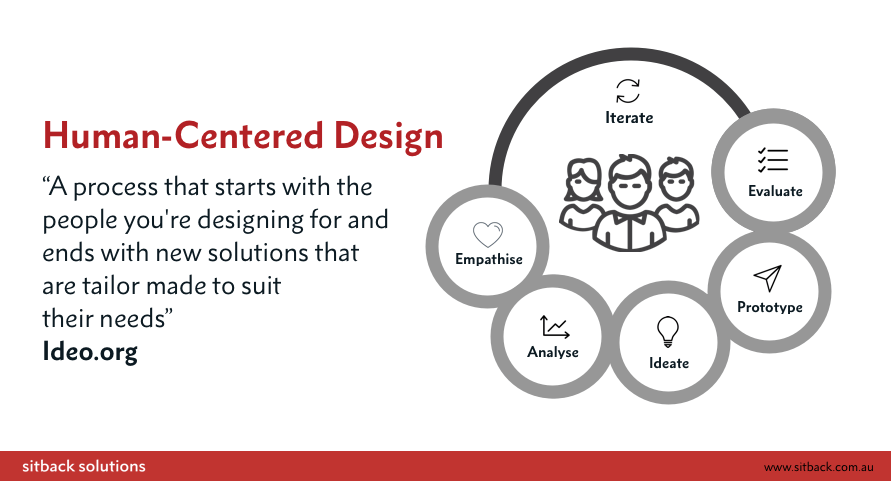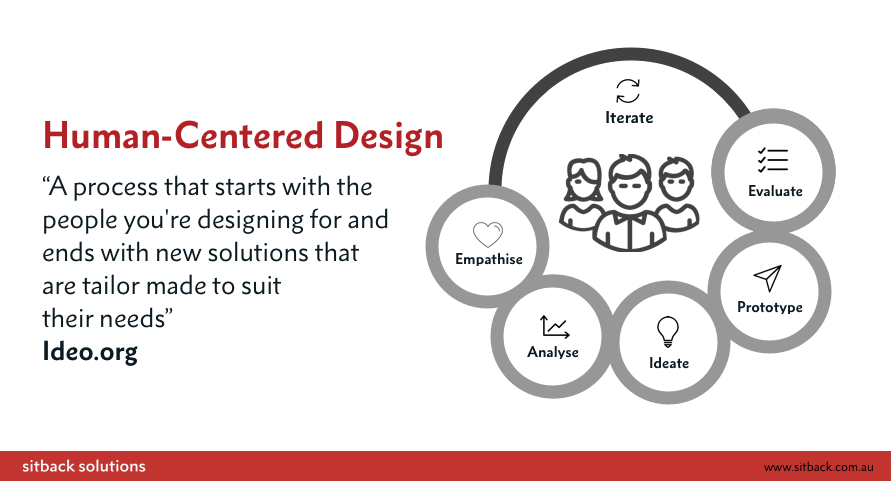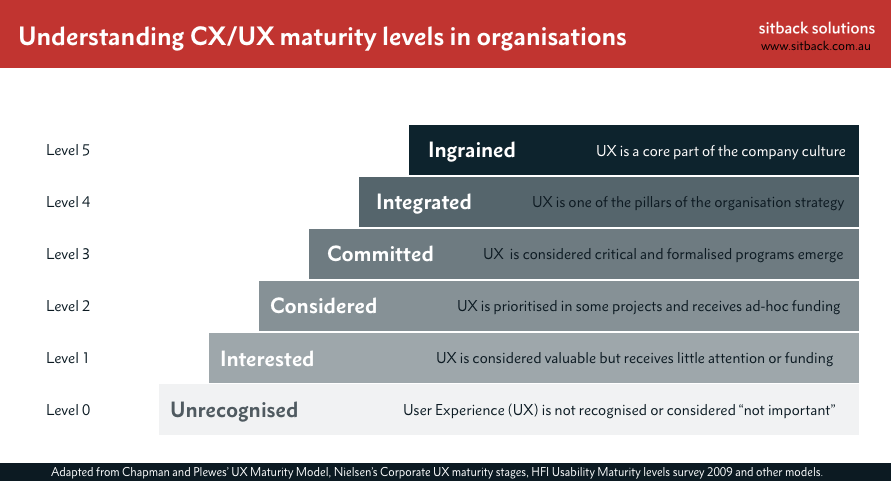Building a (truly) customer-centric organisation

Since 2011, when Forrester proclaimed we’re in the age of the customer, we have been reading about return on investment through focusing on customers:
- 89% of companies expect to compete mostly on the basis of customer experience by 2016, versus 36% four years ago, according to Gartner.
- Implementing a focus on UX increases customers’ willingness to pay by 14.4% and boosts their likelihood to recommend your product by 16.6%, according to Forrester.
- Customer experience will overtake price and product and the key differentiator between brands by 2020, according to Walker.
As a result, more and more organisations are moving away from a product-centric model and talking about becoming customer-centric or creating a customer-centric culture.
However, what does ‘customer-centric’ really mean?
Understanding customer centricity
Peter Fader, renowned behavioural data expert and Co-Director of The Wharton Customer Analytics Initiative, defines customer centricity as:
“a strategy that aligns a company’s development and delivery of its products/services with the current/future needs of a select set of customers”.

According to an article published by HBR entitled ‘The Truth About Customer Experience’, the rewards of implementing customer centric approaches include:
- Higher customer and employee satisfaction.
- Increased revenuelower costs.
- More-effective collaboration across functions and levels.
In the same article, the authors also state the transformation journey to become a customer centric organisation is not easy or quick, as it requires many steps and milestones, each with its own set of challenges.
That is also my personal experience after years working with many different organisations. There is big difference between caring about your customers (e.g. listening to them or conducting one-off customer research) and becoming a truly customer-centric organisation that starts with the customer needs. It goes without saying that businesses need to generate revenue from those products and services, but the real return on investment comes from understanding their customer needs, shaping their products/services to generate value for their customers and then monetising that value.
Exploring different UX/CX maturity levels
To make it even more complicated, customer centricity is not a black and white situation; there are different UX/CX maturity levels:
- Unrecognised: User Experience (UX) is not recognised or considered “not important”.
- Interested: UX is considered valuable but receives little attention or funding.
- Considered: UX is prioritised in some projects and receives ad-hoc funding.
- Committed: UX is considered critical and formalised programs emerge.
- Integrated: UX is one of the pillars of the organisation strategy.
- Ingrained: UX is a core part of the company culture.

Personally, I would even add another level that is not represented in this model:
- Pretended: UX is proclaimed to be critical but actively ignored in decision-making.
These are companies that say they are customer-centric and they care about their customers but have not taken any steps in that direction or, even worse, have asked customers for feedback or conducted research and then completely ignored the results and continued doing the exact same thing they were doing before in the exact same way.
Luckily, this is not that common. Most organisations and their executives really do want to become more customer-centric. Unfortunately, many have no idea how to get there or where to start.
Becoming more customer-centric
The first step towards becoming more customer-centric is to understand the different UX/CX maturity levels and identify where is your organisation currently at.
Based on your current UX/CX maturity level, context or culture, different strategies will be more effective than others in taking your organisation to the next level including:
- Raising awareness on the importance of UX at all levels of the organisation.
- Investing in pilot UX programs that can demonstrate results and get buy-in.
- Formalising UX processes, tools and resources across projects and teams.
- Establishing a UX leadership function (C-suite) to set UX as an active priority.
- Sharing success metrics and KPIs for transparency and accountability.
- Building UX capabilities across teams to increase collaboration.
The problem with most of these strategies is that they are not easy to implement in organisations that have zero internal UX capabilities. If that’s your case, don’t panic! All is not lost…
Building UX/CX capabilities
If your organisation does not have enough people with UX research skills or familiarity with the UX design process, there are a few things you can do:
- Engage an external agency to provide UX services for a pilot UX program.
Advantages: This approach will only give you short-term results, but it can be helpful to demonstrate ROI to build the business case for setting up an internal UX function.
Disadvantages: The in-depth customer knowledge gained along the project does not stay in the organisation, most of it leaves with the agency at the end of the project. - Hire UX experts and set up an internal UX leadership function/team.
Advantages: This approach sets a solid foundation for a successful customer-centric organisation in the long run and demonstrates the business is truly committed.
Disadvantages: The upfront investment and ongoing costs can be a barrier. Also, finding good UX practitioners is not easy, and you will need someone with a solid understanding of UX to interview, manage and mentor those UX experts. - Bring in external UX help for an immediate project while simultaneously building internal capabilities.
Advantages: This approach can generate results in the short term while providing your staff with training, mentoring and hands-on exposure to the UX process & tools.
Disadvantages: You must allow enough time in your staff schedule to learn and participants. Also, they need to be interested in upskilling in UX and being highly involved in the project activities.
Based on my personal experience, I would recommend the third approach or a combination of two and three: bring in external help while creating or scaling an in-house UX function/team.
At Sitback, we have been using these approaches with more and more clients in the last two years and we’ve seen really positive outcomes.
As an example, we partnered with an Australian University to help them redesign a set of internal dashboards and BI tools. Their internal team specialised in business analytics and development, however, they have little or no knowledge in UX research and design or Data visualisation. This is where our expertise lies.
We conducted the initial user research to understand the user needs, business goals and technical challenges, then designed the first version of the key dashboards and completed a number of iterations using a sprints-based, Agile approach. In addition to that, we embedded formal training and mentoring along the project to upskill their internal team so that they could take care of the day-to-day maintenance of those BI tools, adjustments, new features and continuous optimisation when our engagement concluded.
As such, we had higher level of involvement in the initial phase, but by the end of the last sprint the University’s staff was doing most of the UX work while we were there to provide support and guidance.
At the end of our engagement, their internal team was ready to take ownership of the dashboards and were set for success: they had all the customer knowledge gained along the project, solid UX skills and hands-on exposure to different UX methods and tools.
As UX experts, we are happy to do the heavy lifting of setting up a completely new product or conducting a critical research piece but we love to see the internal teams taking ownership of the resulting work and using the skills and tools we’ve taught them to take that product/service to the next level.
Have you used any of the strategies mentioned in this article to become more customer-centric?
I’d love to hear your thoughts and experiences in the comments section below!
Enjoyed this article? We’ve got loads more useful content to help you and your organisation succeed in the digital world; from User Experience best practices and Tips, to Web Development insights and business strategies. Subscribe to our Blog now and we’ll send you a quick email each time we publish a new article.
Are you interested in exploring how we can help your organisation become more customer-centric?
Our approach to User Experience Research and Design is based entirely around this concept: putting the customer at the centre of everything we do. If you’d like to find out more, then get in touch; we’d love to help you achieve you vision.
{{cta(‘ab27b73e-17ba-4cf2-8461-868cb843f5a6’)}}
